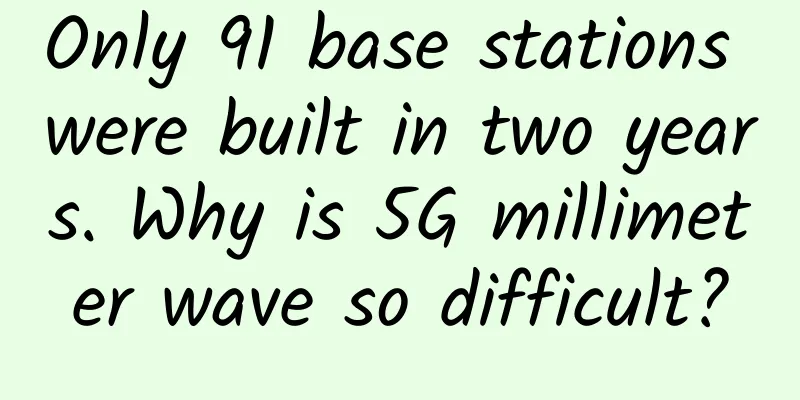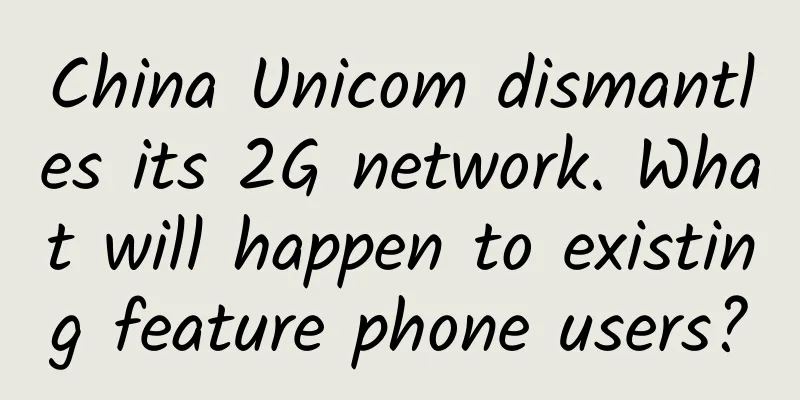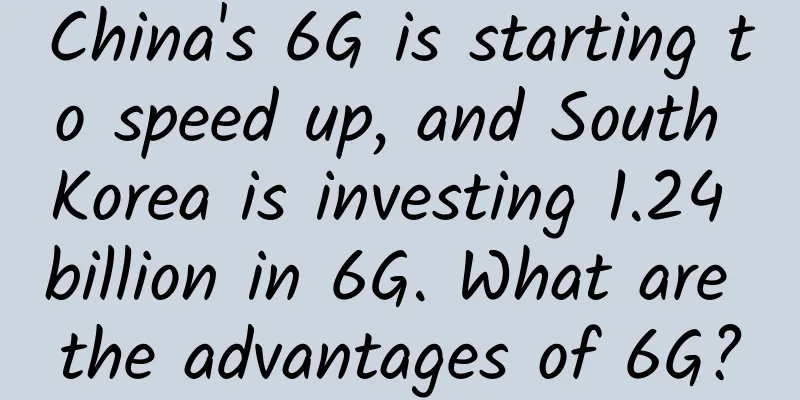Only 91 base stations were built in two years. Why is 5G millimeter wave so difficult?

|
This article is reprinted from the WeChat public account "Network Optimization Mercenary", the author is in correspondence. To reprint this article, please contact the WeChat public account "Network Optimization Mercenary". If the sub 6GHz 5G network is likened to expanding a single-lane highway in an old city, then millimeter wave 5G is equivalent to building a new four- to eight-lane highway in a new city. Compared with sub 6GHz, millimeter wave not only has the advantages of large bandwidth, high capacity and low latency, but also because it is in the ultra-high frequency band, it is like an uncultivated virgin land and an unpolluted pure land for the mobile industry. It can be used freely without worrying about wireless interference. Millimeter waves were once considered the most valuable spectrum resource in the 5G era. However, at present, while sub-6GHz 5G is developing rapidly around the world, the development of millimeter wave 5G is quite slow, and even falls into an embarrassing situation of being caught in a dilemma. 1 South Korea, as a global 5G pioneer, is the most typical example of the development dilemma of millimeter wave 5G. As early as 2018, South Korea auctioned the 3.5GHz and 28GHz 5G frequency bands. After winning the 5G frequency bands, the three major operators in South Korea submitted a 3-5 year 5G base station construction plan to the South Korean regulator, promising to build 45,215 28GHz millimeter wave 5G base stations within three years (by the end of 2021). However, although the construction of South Korea's 3.5GHz 5G network is in full swing, the construction of 28GHz 5G is very slow. As of March 2021, South Korea's three major operators have built a total of only 91 28GHz 5G base stations, which is far from the original plan. South Korean regulators have repeatedly called on operators to speed up the construction of millimeter wave 5G, and even warned that if the set goals cannot be achieved by the end of 2021, the 28GHz frequency band will be reclaimed. However, the response of South Korean operators is just to spread their hands and express helplessness. Operators said that the millimeter wave service model is unclear, the technology and equipment are not mature, and the coverage capacity is only 10%-15% of 3.5GHz. It requires the deployment of very dense base stations. The network investment cost is exponentially increasing compared to 3.5GHz. It is not suitable for building a nationwide network and can only be used in hot spots and 5G private network deployment. South Korean operators also said that there is no need for South Korea to compete with the United States for the first place in 28GHz 5G construction, because the penetration rate of fiber-optic broadband in the United States is relatively low. They hope to use 5G millimeter wave fixed wireless to replace fiber-to-the-home. South Korea has a high penetration rate of fiber-optic broadband. The millimeter wave frequency band will be mainly used for mobile services and enterprise private networks. However, for mobile services for the general public, a large number of base stations need to be deployed, and the network deployment cost is too high. For 2B private networks in vertical industries, the current business model is not yet mature. Since the cost of deploying millimeter wave 5G networks is too high and operators are unwilling to invest, let the three operators build and share together. In response to the slow progress of millimeter wave 5G deployment, the Korean industry has put forward such a suggestion. But the problem arises again. On the one hand, if the three operators jointly build and share the millimeter wave 5G public network, since the millimeter wave wireless coverage range is too small, communication interruption is likely to occur when the terminal moves from the network area of one operator to the area of another operator; on the other hand, for the 5G private network, it will be the focus of competition among operators in the 2B field in the future, and it will be difficult for operators to reach a cooperation in joint construction and sharing. South Korea is not an isolated case. The United States commercialized 5G millimeter wave as early as 2019. According to the latest test data from market research company OpenSignal, the availability rate of its 5G millimeter wave network is less than 1%. According to statistics, as of January 2021, only eight operators in the world provided 5G millimeter wave services. These data show the slow progress of global 5G millimeter wave development. 2 What happened to 5G millimeter wave? Why is it developing so slowly? Let us use a table to explain. CoverageThe advantages of millimeter waves are large bandwidth and high capacity, but due to their high frequency and short wavelength, free space propagation loss, penetration loss and diffraction loss are large, resulting in a small coverage range for a single cell. Actual measurements show that even if the terminal is in a line-of-sight (LoS) environment, the coverage range of a millimeter wave cell is only about 100 meters, which is almost the same as the coverage range of Wi-Fi. Compared with sub 6GHz, the worse the diffraction ability of millimeter waves, the worse the penetration ability, and it is difficult to penetrate obstacles such as walls, doors and room furniture. Therefore, in densely populated urban areas, operators need to build more base stations and ensure that the base stations and terminals are in line-of-sight to achieve stable and high-speed communication. Even if 5G private networks are deployed in a point-to-point manner for 2B scenarios, on the one hand, more base stations need to be built for larger parks and large factories; on the other hand, due to the presence of walls, doors, equipment and other obstacles in indoor places such as factories, office buildings and hospitals, it is necessary to ensure the line-of-sight environment between the terminal and the base station to maintain high-speed and stable communication. This also requires the deployment of more base stations at multiple points, which will bring higher network deployment costs. The solution is to improve coverage through Massive MIMO + beamforming, but this will increase the number of antenna units, power amplifiers, low-noise amplifiers and other components, and the cost of the equipment will also increase. In addition, the coverage of millimeter waves can also be expanded by adding repeaters and reflectors. Base station unit priceCompared with sub 6GHz, millimeter wave not only requires the construction of more base stations, but the bigger problem is that the unit price of millimeter wave base stations is about 30% to 40% higher than that of sub 6GHz. The main reasons are: 1) Most operators in the world deploy 5G networks through sub 6GHz, which has scale advantages, while there are few millimeter wave base stations in the world and the unit price is higher; 2) The DU and RU of sub 6GHz base stations are separated, and the DU can be deployed centrally, while the RU and DU of millimeter wave base stations are combined, so the price is more expensive; 3) There are internal architectural differences between millimeter wave base stations and sub 6GHz base stations (for example, millimeter wave base stations have more antenna units). Terminal EcosystemAs for the sub 6GHz terminal ecosystem, there are more and more types of smartphones, 5G CPE, and 5G modules, and the terminal ecosystem is growing, but the millimeter wave terminal ecosystem is still in a very early stage, especially for the 2B field. At the same time, global terminal chip manufacturers are more optimistic about the sub 6GHz ecosystem and will not develop modems that use millimeter waves alone, which means that there will be no 5G private networks that use millimeter waves independently. Construction and operating costsAs mentioned earlier, if millimeter waves are used to build 5G public networks, dense base stations need to be deployed, and the construction and operation costs increase exponentially compared to sub 6GHz. What if millimeter waves are used to deploy 5G private networks? Currently, one of the biggest obstacles to the development of 5G 2B private networks is that their cost is higher than Wi-Fi, and the cost of deploying 5G private networks using millimeter waves is higher than that of using sub 6GHz. Obviously, this further raises the threshold for enterprise 5G private network deployment. |
<<: The “6G” trend is sweeping the world, and it is still unknown who will win
>>: Share an interesting data analysis method
Recommend
Why 5G Private Networks Are Critical to Enterprise Digital Transformation
Today’s enterprise manufacturing facilities are u...
Let’s talk about HTTP pipelining
HTTP pipelining is a technique for sending multip...
HTTP caching is enough to read this article
Introduction HTTP caching mechanism is an importa...
Solutions for 5G Network Security Threats
With the support of artificial intelligence techn...
What is a Computer Network Hub?
Quick definition: A computer network hub is a lay...
Wireless charging is convenient, but how does it work?
In recent years, wireless charging has been widel...
Let’s listen to what 5G R18 is talking about?
[[400274]] This article is reprinted from the WeC...
HostHatch: 2TB hard drive VPS annual payment of $50, 8G memory VPS annual payment from $35
HostHatch is a foreign hosting company founded in...
On the eve of large-scale commercial use of 5G, private LTE networks will take the lead in IoT applications
In the past few days, South Korea and the United ...
How to decide if Wi-Fi 6 is right for you?
There’s a lot of hype surrounding the next Wi-Fi ...
5G is coming, but the three major operators are playing "Three Kingdoms"
I wonder if you have visited the business halls o...
What else to look forward to in the communications industry in 2021?
[[373658]] This article is reprinted from the WeC...
Multiple Choices for Internet Communication: Do you really know how to make phone calls?
"Do you really know how to make phone calls?...
Is Bluetooth mesh the future of smart buildings?
Smart buildings, whether residential, commercial ...
Network Address Translation Protocol (NAT) and Its Application Examples
1. The meaning of NAT When some hosts within a pr...









